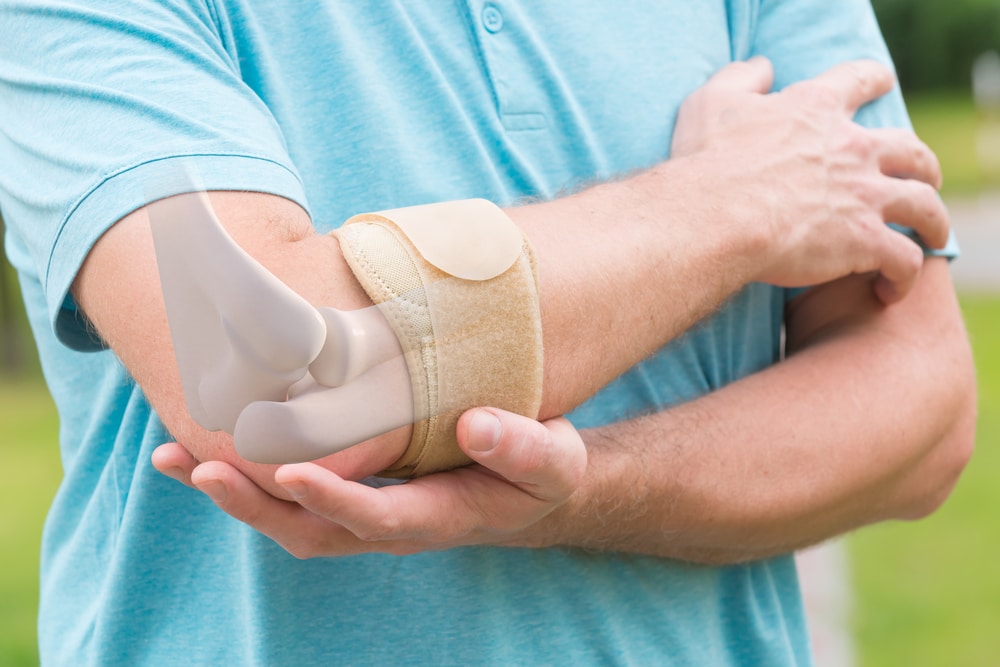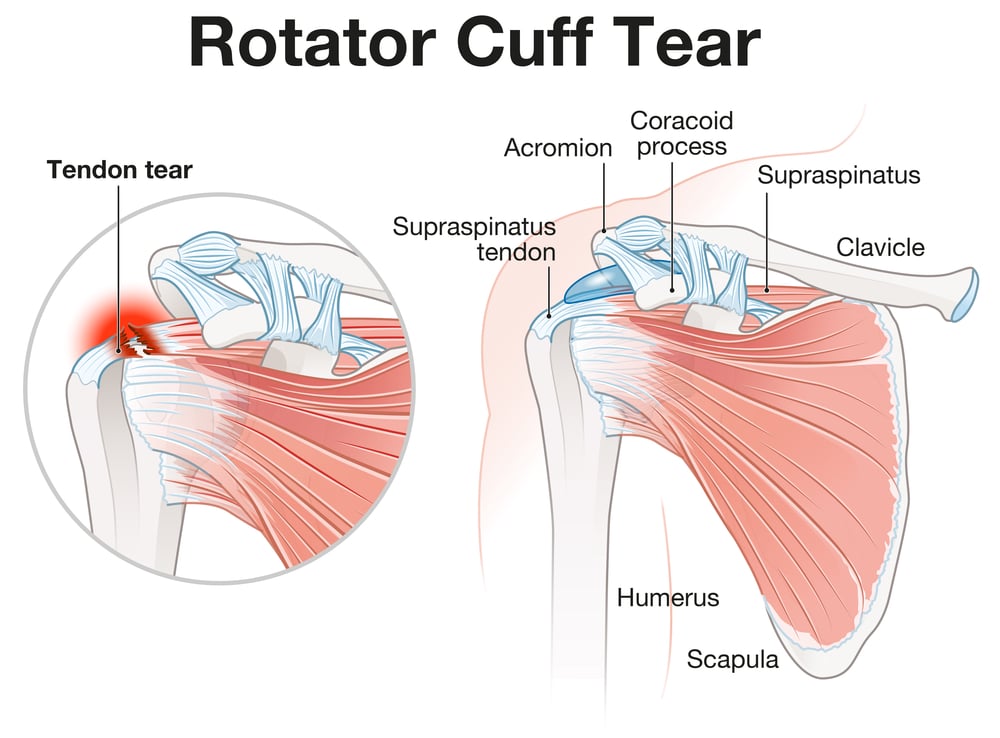What Is a Cumulative Trauma Disorder?

Cumulative trauma disorders are a subset of physical ailments caused by repeated strain, unnatural motion or body postures, and overuse.
Cumulative trauma disorders primarily affect the musculoskeletal system and can cause problems for body parts like nerves, tendons, muscles, joints, and ligaments.
Also known as musculoskeletal disorders, CTDs, or overuse syndrome, these repetitive strain injuries are the leading occupational hazard for workers in any industry in the United States.
The following text will inform readers about the leading causes of cumulative trauma disorders; the main risk factors they need to look out for; the most common musculoskeletal disorders affecting workers today; and the best ways to prevent this major occupational issue. We also offer a full industrial ergonomics training program.
What Is Cumulative Trauma?
The term “cumulative trauma” refers to the damage done to different parts of the human body as a sum total of various micro-injuries sustained over a prolonged period of time, rather than a major injury that occurred as a result of a single incident.
Essentially, repetitive motions that put an unnatural strain on the body will develop into a more serious ailment the longer they continue.
Cumulative trauma manifests itself in the form of a wide variety of disorders, each of which has its own causes and symptoms.
What Is a Cumulative Trauma Disorder Caused By?
CTDs are primarily caused by work-related activities, often those thought to be pedestrian or unharmful.
Typing on a computer or sitting at a desk for long periods of time without stopping can lead to these ailments. Rapid movements and excessive stress also cause these diseases to develop.
Additionally, prolonged exposure to vibrations and a dearth of recovery time from active labor contribute to the development of CTDs.
The main thing to look out for when guarding against CTDs is any form of bodily overuse in the workplace, especially without sufficient reprieve.
What Are the Most Common Cumulative Trauma Disorders (CTDs)?
Repetitive strain injuries come in a wide variety of different forms, and each one presents a serious occupational safety hazard for workers in all kinds of fields. That’s why industrial ergonomics is so important as it can help reduce workplace injuries.
Here are some of the most widespread cumulative trauma disorders that office workers, industrial laborers, and everyone in between are at risk of developing.

Carpal Tunnel Syndrome
Carpal tunnel syndrome is a CTD that affects a particular nerve housed in a body part called the carpal tunnel located in the wrist. When this nerve becomes compressed by a change in the shape of the tunnel, this can cause a variety of health problems for affected patients.
This CTD usually manifests itself as numbness, tingling, or pain in the fingers. If not treated properly, it can result in a restricted range of wrist motion and, in severe cases, loss of dexterity.
Prolonged awkward hand posture or repetitive movement of the hands can lead to this disease, so individuals whose work involves a lot of typing, cutting, and other intricate hand movements are at high risk. In fact, due to the popularity of sedentary office jobs, this syndrome is one of the most common CTDs in the United States.
Raynaud’s Syndrome
HAVS, or hand-arm vibration syndrome, alternately known as “vibration white finger”, is a CTD caused by prolonged vibration of the hands, especially in lower-temperature environments. This is also often called Raynaud’s disease.
It typically manifests as paleness, coldness, and numbness of the hands. Loss of feeling in the fingers and hands may eventually occur, along with diminished muscle control.
Workers who must tightly grip vibrating implements such as needle guns and hammer drills for long stretches of time have a higher risk of developing this condition.
Tendonitis
This is the name for the inflammation of the tendons, or the networks of fibrous tissues that keep our muscles attached to our bones. CTDs affecting specifically the tendons are extremely common, and this particular form is more pedestrian than other tendon CTDs.
This inflammation is typically caused by repeated overextension of groups of muscles used when working strenuously. Without time to rest in between movements, the micro-tears caused by normal exercise cannot heal correctly, which causes swelling. This can lead to intense pain if not treated.
When patients receive a tendonitis diagnosis, the most conservative treatment is to find a way to reduce inflammation of the tendons to prevent the symptoms from worsening.
De Quervain’s Disease
This CTD is the result of excessive wear of the synovial sheath, or the protective coating, used by the two tendons in the thumb. The inflammation produced by this injury often results in reduced thumb dexterity.
Those most at risk of developing De Quervain’s disease are those who work in roles requiring repetitive intricate hand movements, such as cleaners, craftspeople, and construction workers.
Adequate rest and regular breaks can minimize the risk.

Tennis Elbow
Lateral epicondylitis, also known as tennis elbow, is a CTD that manifests as swelling of the tendon attached to the elbow. Fast, unnatural movements of the upper extremities contribute to this ailment, and if left untreated, restricted joint mobility and pain in the muscles may occur.
Anyone diagnosed with lateral epicondylitis would be advised to rest from strenuous activities and allow the injury to heal completely. Depending on the severity of the condition, a doctor may recommend a more intensive treatment to help repair the tendon.
Trigger Finger
Workers who must often bend or squeeze the fingers in a tight grip around an implement are at risk for developing this tendon sheath swelling in the digits, also known as trigger finger.
When this swelling occurs, the tendon gets stuck in place, and the surrounding muscles cannot be moved normally.
While intense pain in the tendons typically does not occur as a result of this condition, it can be uncomfortable and cause difficulty using the hands.
Tenosynovitis
The term “tenosynovitis” refers to any disturbance of the tendon sheath that causes swelling, pain, or difficulty moving the muscles around it. It is most often caused by neglecting to maintain proper posture in certain body parts, such as the wrist, arms, and other high-risk muscle groups.
When left untreated, tenosynovitis can increase the risk of injury with normal use and can result in significant pain or even compromised functionality of the body part.
Those who receive a diagnosis should follow their doctor’s instructions to rest the muscles and relieve pressure on the tendons so they can heal correctly.
Stenosing Tenosynovitis
Twisting and gripping muscles tightly and repeatedly can cause the synovial sheath to thicken. This creates additional friction against the tendon housed inside the sheath, leading to irritation.
Taking breaks between repetitive uncomfortable movements and allowing adequate recovery periods after firmly gripping with the hands can reduce the risk of developing this condition.
Golfer’s Elbow
People who work in intensely laborious industries and certain athletes should be on heightened alert to protect themselves from developing medial epicondylitis, or golfer’s elbow.
Simultaneously bending the wrist and twisting the forearm with considerable force, such as during a golf swing or certain construction tasks, is what causes this irritation of the tendons in the elbow, which control the fingers.

Ganglionic Cysts
Typing and performing other repetitive hand motions for prolonged stretches of time can lead to this ailment of the tendon sheath.
These unnatural actions cause synovial fluid to build up in the wrist, creating an uncomfortable bump that can be seen through the skin.
Thoracic Outlet Syndrome
Patients who suffer from thoracic outlet syndrome experience pressure on the spinal nerves as well as certain blood vessels which are mainly involved in controlling arm movements.
This condition often results from work that requires the patient’s arms to be raised above their head for long stretches of time.
Thoracic outlet syndrome most commonly manifests as a diminished wrist pulse and numbness in the hands or arms. Laborers who perform associated tasks and experience these symptoms are advised to seek medical attention.
Bursitis
Bursae are tiny disks in the joints filled with the same fluid found inside the tendon sheath.
When the anatomical structures around the bursae are overused, they can rub up against them, causing swelling and irritation. This limits the range of motion in the afflicted joints, typically the knees, shoulders, and elbows.

Rotator Cuff Tendonitis
Individuals whose work or hobbies require them to keep their shoulders lifted for prolonged periods of time are at risk for this disorder. It involves swelling and irritation of the tendons attached to the rotator cuff, the part of the shoulder that governs its range of motion.
While pain and decreased shoulder mobility are the most common symptoms, the condition can worsen if not treated properly.
When the anatomical structures around the rotator cuff become excessively thick or swollen, rotator cuff tendonitis can develop into “frozen shoulder syndrome”. This significantly inhibits shoulder function and causes intense pain, so afflicted individuals are encouraged to seek medical intervention as soon as possible.
Pronator Teres Syndrome
Pronator teres syndrome is a common nerve disorder of the forearm. It occurs when swelling of the surrounding anatomical structures causes the median nerve to become trapped. This is most commonly cause by repetitive unnatural movements.
Cubital Tunnel Syndrome
The cubital tunnel is located in the elbow and houses the ulnar nerve. It is known as cubital tunnel syndrome when this nerve becomes impacted by pressure on this structure from outside the body.
Radial Tunnel Syndrome
Radial tunnel syndrome is very similar to pronator teres syndrome, but for this condition, the impacted area is the radial nerve, which becomes trapped as a result of repeated or prolonged forearm extension.
How Can Cumulative Trauma Disorders Be Prevented?
The main form of defense that should be taken into consideration when protecting employees from CTDs is ergonomics.
Ergonomics is the practice of improving functionality in the workplace and ensuring that the work environment is a healthy fit for those working in it. This involves all kinds of different endeavors, from investing in more comfortable equipment to redesigning workstation layouts to improving workflow organization and reducing overall stress.
In addition to these considerations, there are several precautions that both employers and employees can take in order to create a safer environment for everyone.
Employee Defenses
The most important thing that you as a worker can do to protect yourself from CTDs is to educate yourself about their causes and symptoms. This will give you the tools you need to identify hazards than can lead to the development of an occupational disease.
Once you identify these factors, call attention to them and make a change in your work routines to avoid unnecessary strains. Additionally, be sure to advocate for task rotation and breaks from active work where applicable.
If you notice a CTD’s onset, take measures to alleviate strain on the affected area, such as stretching and exercise.
Employer Responsibilities
The most important thing employers can do to prevent CTDs is hire an ergonomic expert to evaluate the workplace and make strategic changes to alleviate stress on workers.
Input from employees should be integral to this process, as they are often better equipped to identify hazards than their supervisors.
Additionally, employers are encouraged to provide a regular physical examination for all of their employees who wish to participate in order to identify any common CTDs emerging from the working environment.
If any employees are diagnosed, employers should provide physical therapy as well as any other applicable treatment options for any injuries or ailments sustained as a result of their working activities.
Education Is the First Step to Defending Yourself and Your Employees Against Cumulative Trauma Disorders
A cumulative trauma disorder is no laughing matter, and workers and employers alike should be concerned about preventing these unfortunate ailments from occurring. The more you know about the various kinds of overuse syndromes, the better you’ll be to avoid them.
Workers are strongly encouraged to use their knowledge of CTDs to make a proactive change in their work habits and environment in order to protect their health and well-being.
Frequently Asked Questions About Cumulative Trauma Disorders
Regardless of industry, the entire adult population in the workforce is at risk for overuse syndromes.
These disorders are caused by mundane work-related activities such as repetitive hand motions and unnatural postures, so even sedentary desk workers are not exempt from risk. Anyone whose employment situation requires them to complete repetitive tasks that strain the body should be on guard against cumulative trauma disorder.
“Cumulative trauma disorder” is an umbrella term for a wide variety of musculoskeletal ailments. As such, each disorder is associated with its unique set of symptoms.
Symptoms for different forms of cumulative trauma disorder must be evaluated case by case. The more you educate yourself about CTDs, the more readily you will recognize the symptoms of their various forms.
Carpal tunnel syndrome and wrist tendonitis are the two most common cumulative trauma disorders (CTDs) in the United States.